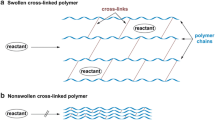Abstract.
Many bioactive peptides must be amidated at their carboxy terminus to exhibit full activity. Surprisingly, the amides are not generated by a transamidation reaction. Instead, the hormones are synthesized from glycine-extended intermediates that are transformed into active amidated hormones by oxidative cleavage of the glycine N-Cα bond. In higher organisms, this reaction is catalyzed by a single bifunctional enzyme, peptidylglycine α-amidating monooxygenase (PAM). The PAM gene encodes one polypeptide with two enzymes that catalyze the two sequential reactions required for amidation. Peptidylglycine α-hydroxylating monooxygenase (PHM; EC 1.14.17.3) catalyzes the stereospecific hydroxylation of the glycine α-carbon of all the peptidylglycine substrates. The second enzyme, peptidyl-α-hydroxyglycine α-amidating lyase (PAL; EC 4.3.2.5), generates α-amidated peptide product and glyoxylate. PHM contains two redox-active copper atoms that, after reduction by ascorbate, catalyze the reduction of molecular oxygen for the hydroxylation of glycine-extended substrates. The structure of the catalytic core of rat PHM at atomic resolution provides a framework for understanding the broad substrate specificity of PHM, identifying residues critical for PHM activity, and proposing mechanisms for the chemical and electron-transfer steps in catalysis. Since PHM is homologous in sequence and mechanism to dopamine β-monooxygenase (DBM; EC 1.14.17.1), the enzyme that converts dopamine to norepinephrine during catecholamine biosynthesis, these structural and mechanistic insights are extended to DBM.
Similar content being viewed by others
Author information
Authors and Affiliations
Additional information
Received 7 December 1999; received after revision 24 February 2000; accepted 29 February 2000
Rights and permissions
About this article
Cite this article
Prigge, S., Mains, R., Eipper, B. et al. New insights into copper monooxygenases and peptide amidation: structure, mechanism and function . CMLS, Cell. Mol. Life Sci. 57, 1236–1259 (2000). https://doi.org/10.1007/PL00000763
Issue Date:
DOI: https://doi.org/10.1007/PL00000763




